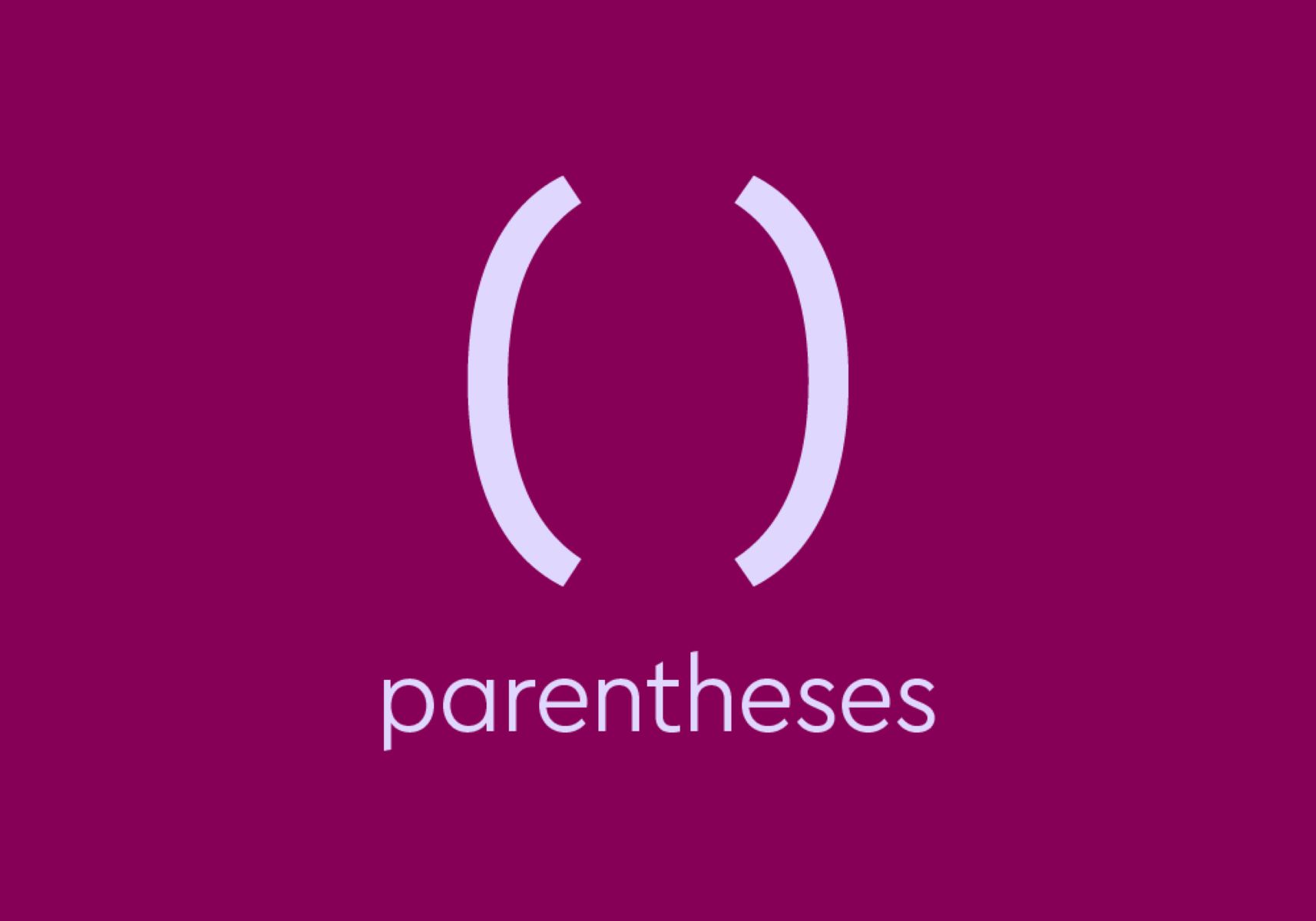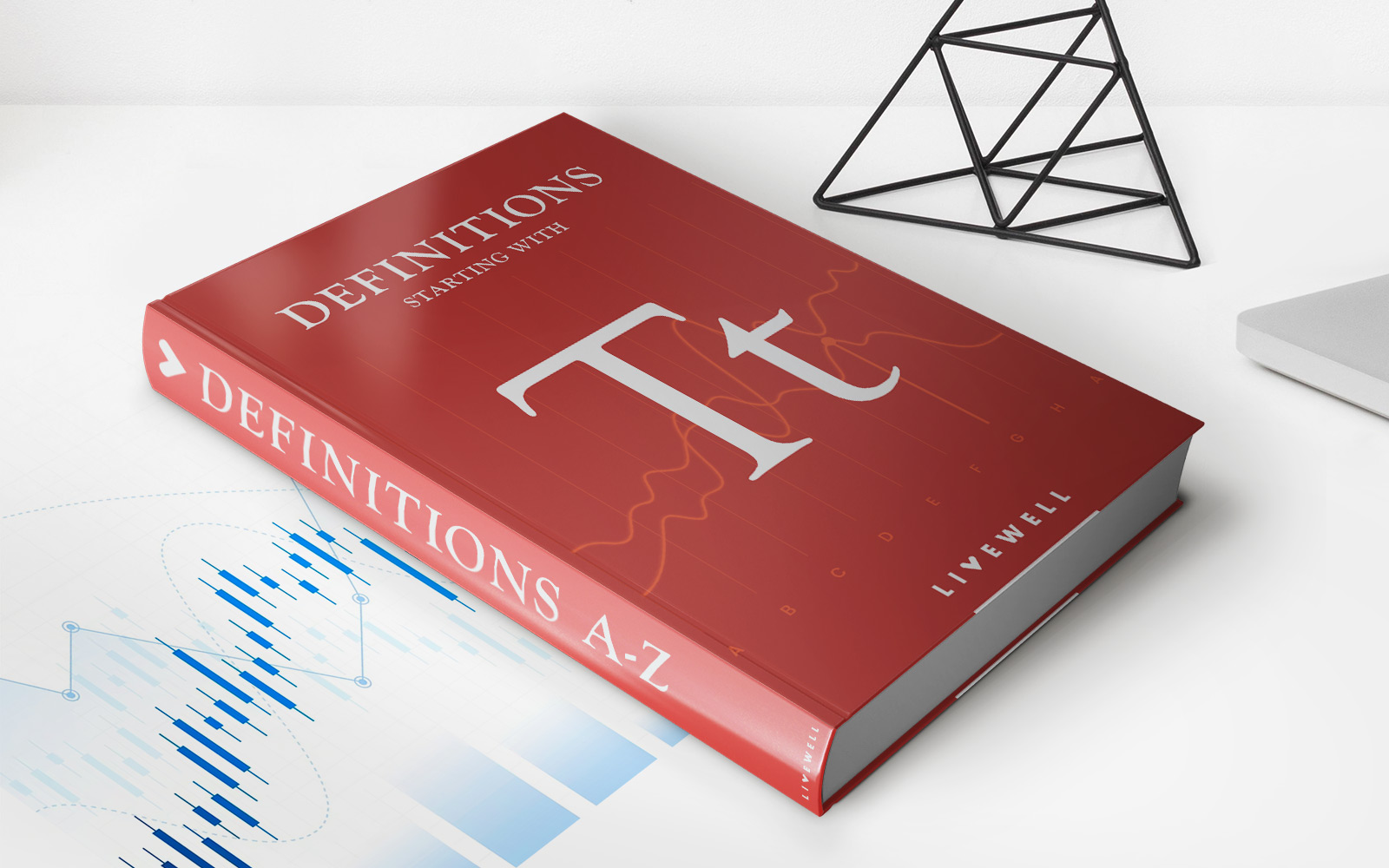

Finance
What Does ITF Mean On A Checking Account
Published: October 28, 2023
Discover the meaning of ITF on a checking account and its significance in finance. Stay informed about financial terms and their implications for your banking needs.
(Many of the links in this article redirect to a specific reviewed product. Your purchase of these products through affiliate links helps to generate commission for LiveWell, at no extra cost. Learn more)
Table of Contents
Introduction
When it comes to managing our finances, it’s important to understand the various terms and acronyms associated with our bank accounts. One such acronym that you may have come across is “ITF,” which stands for “In Trust For.” In the context of a checking account, the ITF designation indicates that the account has a beneficiary or beneficiaries who will inherit the funds in the account upon the account holder’s death.
While the concept of ITF may seem straightforward, it’s essential to delve deeper into what it means and the implications of having an ITF designation on your checking account. In this article, we will explore the significance of ITF, its benefits, common uses, potential drawbacks, and how you can set up ITF on your checking account. By the end, you’ll have a comprehensive understanding of ITF and its role in financial planning.
So, let’s dive in and unravel the mysteries of ITF on a checking account.
Understanding ITF
ITF, or “In Trust For,” is a designation used in the banking industry to specify a beneficiary on a checking account. It allows the account holder to name someone who will receive the funds in the account upon their passing. Essentially, it is a way to ensure that your assets are transferred to your chosen beneficiary outside of the probate process.
When an account is established with an ITF designation, the beneficiary has no ownership rights to the funds while the account holder is alive. The account holder remains in complete control of the account and can conduct transactions as usual. However, upon the account holder’s death, the funds are automatically transferred to the designated beneficiary without the need for probate or formal legal proceedings.
It’s important to note that the ITF designation only applies to the funds in the checking account and does not extend to other assets or accounts owned by the deceased. Additionally, the beneficiary has no access to the funds until the account holder passes away, and the account is typically frozen until the necessary documentation is provided to verify the account holder’s death.
ITF designations are commonly used for estate planning purposes, allowing individuals to have control and assurance that their assets will be transferred seamlessly to their intended beneficiaries. By designating a beneficiary through ITF, you can help avoid potential conflicts and ensure that your loved ones receive the funds without delay or complications.
Now that we have a better understanding of ITF on a checking account, let’s explore its importance and the benefits it offers.
Importance of ITF on a Checking Account
Having an ITF designation on your checking account can offer several important advantages, making it a valuable tool for estate planning and financial management. Here are some key reasons why ITF is important:
1. Probate Avoidance: One of the primary benefits of ITF is that it allows for the transfer of funds to the beneficiary outside of the probate process. Probate is the legal process of distributing a deceased person’s assets, which can be time-consuming, costly, and subject to court supervision. By designating an ITF beneficiary, you can help your loved ones avoid the probate process and receive the funds more quickly.
2. Privacy: When a person passes away, their will and other legal documents become part of the public record during probate. By using ITF, the transfer of funds occurs privately without the need for court involvement, helping to maintain the privacy of your financial affairs and the beneficiaries.
3. Continuity of Financial Support: For individuals who have dependents or beneficiaries who rely on them financially, the ITF designation ensures that the funds in the checking account will be readily available to support their financial needs after the account holder’s death. This can provide peace of mind, knowing that your loved ones will have access to immediate financial resources.
4. Flexibility and Control: ITF designations offer flexibility as they can be changed or revoked at any time during the account holder’s lifetime. This allows for adjustments to be made as circumstances change, such as the birth of a child, divorce, or the desire to name different beneficiaries.
5. Simplicity: Setting up an ITF designation is relatively straightforward and can usually be done by providing the necessary information to your financial institution. Compared to setting up complex estate plans or trusts, ITF provides a simple and accessible option for transferring assets to beneficiaries.
These factors highlight the importance of having an ITF designation on your checking account. It allows for a smoother transfer of assets, maintains the privacy of your finances, and ensures your loved ones have access to financial resources when they need them most.
Next, let’s explore some specific benefits of ITF on a checking account.
Benefits of ITF
Choosing to use ITF on your checking account can provide you and your beneficiaries with several significant benefits. Here are some key advantages of having an ITF designation:
1. Avoidance of Probate: As mentioned earlier, one of the primary benefits of ITF is the ability to bypass the probate process. By designating a beneficiary on your checking account, the funds can be transferred directly to them without the need for court intervention. This saves time, expense, and potential complications associated with probate.
2. Quick Transfer of Funds: When you pass away, the funds in the ITF-designated checking account are typically transferred to the beneficiary relatively quickly. This immediate access to funds can be crucial for the beneficiary’s financial stability and addressing any immediate expenses or obligations they may have.
3. Continued Financial Support: If you have dependents or beneficiaries who rely on your financial support, establishing ITF ensures that they will have access to funds to cover their ongoing expenses. This can provide peace of mind, knowing that your loved ones will be taken care of financially, even after your passing.
4. Privacy: Unlike assets that go through the probate process, the funds transferred through ITF remain private. ITF designations offer a level of confidentiality, as the transfer occurs outside of court supervision and without the need for public documentation. This can be beneficial for those who value privacy and wish to keep their financial affairs confidential.
5. Flexibility: ITF designations offer flexibility, allowing you to change or revoke the beneficiary designation at any time during your lifetime. This is particularly helpful if your circumstances change, such as a change in your relationship status or the birth of new beneficiaries. You can easily update the beneficiary information to align with your current wishes.
6. Simplified Estate Planning: For individuals who may not have complex or extensive estates, ITF can provide a simple and accessible estate planning option. It eliminates the need to create a trust or go through the formalities of probate for a specific checking account, making it a cost-effective and straightforward choice.
These benefits make ITF an attractive option for individuals who want to ensure a seamless transfer of their checking account funds to their chosen beneficiaries, avoiding probate and maintaining financial privacy. However, it’s essential to consider the potential drawbacks as well, which we’ll explore in the next section.
Next, let’s delve into some common uses of ITF on a checking account.
Common Uses of ITF
ITF, or “In Trust For,” designations on checking accounts have various common uses that can be beneficial for individuals and their beneficiaries. Let’s explore some of the most common scenarios where ITF is used:
1. Estate Planning: ITF is often used as a simple and effective tool for estate planning. By designating a beneficiary on your checking account, you can ensure that the funds are transferred directly to the intended recipient upon your death, avoiding the need for probate.
2. Providing for Minor Children: Parents can utilize ITF to provide for their minor children in the event of their untimely passing. By naming their children as the beneficiaries, the funds in the checking account can be used to support their ongoing needs until they reach adulthood or a specified age.
3. Granting Financial Support to Loved Ones: ITF can be used to provide financial support to specific individuals, such as elderly parents, disabled family members, or other loved ones who depend on your assistance. The funds in the checking account can be used to support their expenses and ensure their well-being even after you are no longer able to provide direct assistance.
4. Charitable Contributions: Some individuals choose to designate charitable organizations as the beneficiaries of their checking account through ITF. This allows them to leave a lasting legacy and support causes that they hold dear, ensuring that their charitable intentions are fulfilled after their passing.
5. Business Succession Planning: ITF can also be used in business succession planning. Business owners may designate a successor or key employees as the beneficiaries of their checking account to help ensure a smooth transition of assets and financial support for the future of the business.
6. Protecting Joint Account Holders: ITF can be advantageous for joint account holders, such as spouses or partners. By designating each other as ITF beneficiaries, the surviving account holder can continue to have immediate access to the funds in the checking account without interruption after the other account holder’s passing.
These are just a few examples of the common uses of ITF on a checking account. The versatility of ITF allows individuals to customize their estate planning and ensure that their assets are distributed according to their wishes, providing support and financial security to their chosen beneficiaries.
While ITF offers numerous benefits, it’s important to understand any potential drawbacks. Let’s explore those in the next section.
Next, let’s discuss some potential drawbacks of using ITF on a checking account.
Potential Drawbacks of ITF
While ITF can be a useful tool for estate planning and asset distribution, it’s crucial to consider the potential drawbacks before designating a beneficiary on your checking account. Here are some potential drawbacks to be aware of:
1. Limited Control: Once you designate an ITF beneficiary on your checking account, you relinquish control over those funds. While you can change or revoke the beneficiary designation during your lifetime, you lose the ability to freely use or transfer the funds as you wish, as they are designated for the beneficiary upon your death.
2. Disinheritance of Other Beneficiaries: When you designate an ITF beneficiary, those funds will pass directly to that beneficiary outside of the probate process. This means that if you have other beneficiaries in your will or estate plan, they may not receive any portion of the funds in the ITF-designated account. It’s essential to account for this potential disparity and ensure that your overall estate plan aligns with your wishes.
3. Legal Challenges: In some cases, designating an ITF beneficiary on your checking account can lead to legal challenges and disputes among family members or other potential heirs. This can delay the distribution of assets and may require costly mediation or court proceedings to resolve these conflicts.
4. Tax Considerations: Depending on the jurisdiction and the amount of the funds involved, there may be potential tax implications when the funds are transferred to the ITF beneficiary. It’s important to consult with a tax professional or an estate planning attorney to understand the potential tax consequences and plan accordingly.
5. Lack of Flexibility: While ITF provides simplicity and ease of use, it may not offer the same level of flexibility as other estate planning options, such as trusts. Trusts allow for more complex asset management and can provide greater control over how and when the funds are distributed to beneficiaries.
6. Changes in Circumstances: It’s crucial to review and update your beneficiary designations regularly to ensure they align with your current circumstances. Changes in relationships, births, deaths, or other life events may require adjustments to the ITF designation. Failing to update your beneficiary information could result in unintended consequences or disputes among potential beneficiaries.
Understanding these potential drawbacks will help you make an informed decision when considering ITF for your checking account. It’s recommended to consult with a knowledgeable financial advisor or estate planning attorney to evaluate your specific situation and determine the best course of action.
Now that we have explored the potential drawbacks of ITF, let’s discuss how to set up ITF on a checking account.
How to Set Up ITF on a Checking Account
Setting up ITF on a checking account is a relatively straightforward process. Here are the general steps to follow:
1. Contact Your Financial Institution: Begin by contacting your financial institution, such as a bank or credit union, where you have the checking account. Inquire about their process and requirements for setting up an ITF designation on the account.
2. Gather Required Documentation: Your financial institution may require certain documentation to establish the ITF designation. Typically, you will need to provide identification documents for both yourself and the designated beneficiary, such as their full name, Social Security number, and address. Additionally, you may need to complete specific forms provided by the financial institution.
3. Complete the Necessary Forms: Fill out the required forms provided by your financial institution accurately and provide all requested information. The forms will ask for details about the account, your beneficiary’s information, and your relationship to the beneficiary.
4. Review and Confirm the Designation: Once you have completed the necessary forms, carefully review the details before submitting them to ensure accuracy. Verify that the beneficiary’s information is correctly entered, as any mistakes could lead to complications in the future.
5. Submit the Forms: Deliver the completed forms to your financial institution following their specified instructions. This may involve mailing the forms, submitting them in person at a branch, or submitting them electronically through the institution’s online banking system, depending on their policies and procedures.
6. Seek Professional Advice (Optional): If you have complex financial affairs or concerns about estate planning, you may want to consult with a financial advisor or estate planning attorney. They can provide guidance tailored to your specific situation and help ensure that your ITF designation aligns with your overall estate plan.
7. Keep Your Beneficiary Information Updated: It’s important to review and update your beneficiary designations periodically, especially if there are any changes in your circumstances or the beneficiaries you have named. Regularly reviewing and updating your beneficiary information ensures that the right individuals receive the funds and reduces the likelihood of disputes or unintended consequences.
Remember, the process for setting up ITF on a checking account may vary slightly among financial institutions. Ensure that you follow their specific guidelines and consult with their representatives as needed.
Now that you know how to set up ITF on a checking account, let’s address some frequently asked questions about ITF.
FAQs about ITF on a Checking Account
Q: Can I designate multiple beneficiaries for my checking account using ITF?
A: In most cases, you can designate multiple beneficiaries for your checking account using ITF. However, it’s important to clarify your financial institution’s policies regarding multiple beneficiaries and any specific requirements they may have for such designations.
Q: Can the ITF designation be removed or changed?
A: Yes, the ITF designation can typically be removed or changed at any time during your lifetime. If you wish to make changes to your ITF designation, you will need to contact your financial institution and follow their specific process for updating beneficiary information.
Q: Will the ITF designation on my checking account affect other aspects of my estate plan?
A: The ITF designation on your checking account only applies to the funds in that particular account. It does not impact other assets or accounts included in your overall estate plan. It’s essential to review and update your entire estate plan to ensure that it aligns with your intentions and reflects any changes made to your ITF designation.
Q: What happens if the designated ITF beneficiary predeceases the account holder?
A: If the designated ITF beneficiary passes away before the account holder, it’s crucial to update the beneficiary information. This may involve designating a new beneficiary or reconsidering your overall estate plan. Contact your financial institution to understand the process for making these changes.
Q: Is ITF the same as joint ownership of a checking account?
A: No, ITF and joint ownership of a checking account are different. With joint ownership, both account holders have equal ownership rights and access to the funds in the account during their lifetime. With ITF, the beneficiary has no access to the funds while the account holder is alive and only inherits the funds upon the account holder’s death.
Q: Can an ITF designation be contested?
A: While it is possible for an ITF designation to be contested, it is generally more challenging to contest as compared to a will. Contesting an ITF designation typically requires proving fraud, undue influence, or lack of mental capacity at the time of the designation. It’s advisable to consult with an estate planning attorney if you anticipate any potential challenges or disputes regarding your ITF designation.
Q: Does ITF provide creditor protection for the beneficiary?
A: In general, ITF designations do not provide creditor protection for the beneficiary. If the designated beneficiary has outstanding debts or legal obligations, the funds in the ITF-designated account may be subject to collection by creditors. It’s important to consult with a legal professional to understand the specific creditor protection laws in your jurisdiction.
These FAQs address some common questions about ITF on a checking account. If you have specific concerns or inquiries related to your situation, it’s recommended to consult with a financial advisor or estate planning attorney.
Now, let’s wrap up our discussion on ITF on a checking account.
Conclusion
ITF, or “In Trust For,” designations on checking accounts provide a convenient and effective way to ensure the seamless transfer of funds to designated beneficiaries upon the account holder’s death. By understanding ITF and its implications, you can make informed decisions about your estate planning and financial management.
In this article, we explored the significance of ITF on a checking account, its benefits, common uses, potential drawbacks, and how to set it up. We learned that ITF offers advantages such as probate avoidance, quick transfer of funds, continued financial support for loved ones, privacy, flexibility, and simplified estate planning.
While there are potential drawbacks to consider, such as limited control, potential legal challenges, and tax implications, understanding these factors allows you to make informed decisions that align with your goals and circumstances.
To set up ITF on a checking account, contact your financial institution, gather the necessary documentation, complete the required forms, review and confirm the designation, and submit the forms according to their instructions. Regularly reviewing and updating your beneficiary information is crucial to ensure it reflects your current wishes.
Remember, ITF on a checking account is just one aspect of the overall estate planning process. It’s important to consider your complete estate plan, consult with professionals if needed, and regularly review your plans to ensure they remain up to date and aligned with your goals.
By utilizing ITF on a checking account and carefully considering your estate planning needs, you can provide financial security for your loved ones, streamline the asset transfer process, and contribute to a more efficient and secure financial future.














